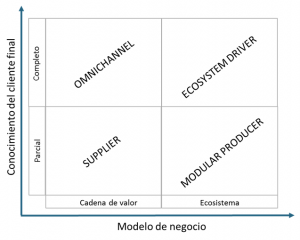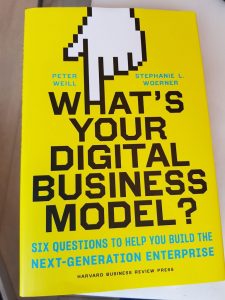What's Your Digital Business Model? (MIT Peter Weill)
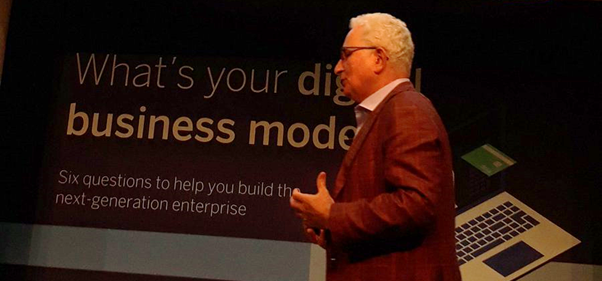
What’s Your Digital Business Model? defines 4 digital business models and how to achieve them.
This is the MIT CSIR’s vision on the digital transformation of a company’s business model.
In the post What is Digital Transformation?, I defined what digital transformation entails. In this post, I will explain the framework used at MIT CSIR to analyze its application to companies.
This post comes with a delay. Sometimes you receive books that take time to read. It’s not that they are not interesting, you just don’t find the moment. This happened to me with “What’s your digital business model?” by Peter Weill and Stephanie L. Woerner.
A few years ago, I had the opportunity to attend a series of master classes at MIT CSIR with Peter Weill and Stephanie L. Woerner on the Digital Transformation of companies. They discussed what it is and how to achieve a digital business model.
In September, I enjoyed once again with Peter Weill (anyone who has seen Peter as a professor knows why I say “enjoyed” and not “attended”) at his book presentation in Madrid.
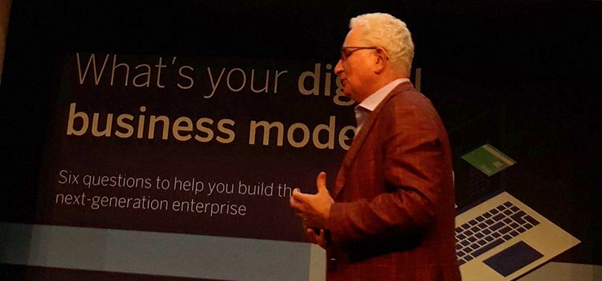
Peter Weill in Madrid in September/18
Taking advantage of this break, I finally read the book and in this post, I aim to summarize some of its main ideas.
A DIGITAL TRANSFORMATION FRAMEWORK
The book defines, based on the observation of many companies, a framework applicable to the digital transformation of companies. To describe it, it relies on studies conducted by MIT itself and real examples of companies that have been able to transform and create their own digital business model.
It starts with two basic but clear ideas about digital transformation:
- Digital transformation is not about technology but about change.
- In change, it is not important to ask if it will happen but when and how it will happen.
What’s Your Digital Business Model?
THE 4 DIGITAL BUSINESS MODELS FOR COMPANY TRANSFORMATION
Next, Weill and Woerner classify all types of digital business models into four groups:
- Digital Business Model 1: “SUPPLIER”: produces products or services distributed through other companies. In this strategy, companies with differential products win. Their challenge is creating quality digital content. An example is an insurance company selling through digital agencies.
- Digital Business Model 2: “OMNICHANNEL”: integration of the value chain creating a complete multichannel experience. In omnichannel, companies that provide the best user experience stand out. Their challenge is not only to generate great content but to envelop it in the best experience. Most of the banking sector is focusing its efforts on this category.
- Digital Business Model 3: “MODULAR PRODUCER”: creates plug-and-play products or services that integrate with those generated by third parties. In this strategy, having a module that can be plug-and-play integrated into any digital ecosystem is necessary. Their challenge is generating APIs, SDKs, etc., allowing easy and quick connections. Paypal is the classic example in this category.
- Digital Business Model 4: “ECOSYSTEM DRIVER”: organizer of an ecosystem that creates value for all its members. These ecosystems become the preferred “destination” for users when seeking to address a particular need. The challenge in these ecosystems is to generate great content (or display third-party content) and incorporate modules from other providers under an extraordinary user experience. Amazon, as a shopping destination, is the classic example.
Each digital business model differs from the rest based on the level of understanding they have of the end customer and whether they are part of an ecosystem or a traditional value chain.
Matrix of the 4 digital business models
What’s Your Digital Business Model? 4 groups
Weill and Woerner present each digital business model in a quadrant of the matrix where the vertical axis represents the knowledge of the end customer. This axis includes not only knowledge of their name, address, or purchase history but also what they do on other platforms, their goals, etc. Greater knowledge of the user allows offering them what they truly need even before they are aware of needing it.
The horizontal axis, “Business Design,” represents who controls key decisions such as brand, price, quality, participants, etc. In the traditional value chain model, control mechanisms are established, which become more complex in the ecosystem model as they involve network systems where different parts must collaborate to create joint value.
Everyone Wants the Ecosystem Digital Business Model
According to a study by MIT CISR, companies whose model is “Ecosystem Driver” end up outperforming their competitors in various aspects such as User Experience, Time to Market, Growth, and Net Margin. The following table summarizes these results.
4 digital business models advantages
This leads many large companies to strive to become the “Ecosystem Driver” in their usual areas of operation. However, the path to achieving this starting from traditional business models is complex, and opportunities in the other quadrants should not be dismissed.
Large organizations occupy different positions in different areas. For example, Amazon, as a leader in the shopping ecosystem, provides AWS services as a modular producer.
The leap cannot be made magically. It is a process. Companies in a “supplier” position face two significant challenges:
- Knowing their users better, which may lead them to an “omnichannel” position.
- Improving their integration capabilities to be present on more platforms or lead their own.
The AETNA Case
Among others, the book describes the example of Aetna: a company that has managed to follow this process is Aetna.
Aetna is a provider of health insurance for individuals, families, and businesses in the USA that has successfully transitioned from a “supplier” to an “ecosystem driver.” The process required gaining a better understanding of the user, allowing Aetna to move to “omnichannel” in 2015.
Currently, Aetna is an attractive destination for those seeking solutions for their health and wellness needs.
Throughout the process, Aetna has acquired companies like iTriage, reached agreements with other health insurance companies and providers, and created APIs to facilitate the integration of third-party content and modules while seeking its own developer community.
6 BASIC QUESTIONS TO DEFINE THE DIGITAL TRANSFORMATION STRATEGY
To start the process, it is important to know which digital business model best fits the company.
To clarify this, the framework created by Weill and Woerner revolves around 6 basic questions that every company must ask when defining its digital transformation strategy:
- RISK and OPPORTUNITY: How important is digital risk to your current business model?
- MODEL: Which business model best suits your company’s future?
- ADVANTAGE: What is your digital competitive advantage?
- CONNECTION: How to use mobile technologies and IoT to connect and learn?
- CAPABILITIES: How are you preparing for the transformation process?
- LEADERSHIP: Do you have enough leadership to make the transformation happen?
What’s Your Digital Business Model?
The book dedicates a chapter to each of these questions, using examples of company transformations like Aetna, BBVA, P&G, Schneider, or USAA to describe the implications of the answer to that question for each digital business model.
It also includes a self-assessment form that facilitates reflection on the company’s current situation and the target situation that makes the most sense for its circumstances.
DELVING INTO 2 KEY QUESTIONS TO CREATE A DIGITAL BUSINESS MODEL
What is your digital competitive advantage? (Chapter 3)
In this chapter, it identifies that advantages can come from 3 sources:
- CONTENT: products and information.
- CUSTOMER EXPERIENCE: quality of the interaction between users and content.
- PLATFORMS: digital processes, data, infrastructure, and services enabling content delivery to users.
It concludes that each digital business model excels in at least one different source of competitive advantage:
- Suppliers excel in their content.
- Omnichannel excel in the Customer Experience they offer.
- Modular producers excel in their platform.
- Ecosystem drivers excel in all 3 sources of competitive advantage.
Necessary capabilities to reinvent a company’s model (Chapter 5)
It highlights the necessary capabilities to move up and to the right in the matrix in search of the new digital business model:
MOVING UP requires:
- Gathering information about user goals.
- Internally amplifying the user’s voice.
- Creating a data-driven decision culture.
- Providing a multichannel and integrated user experience.
MOVING TO THE RIGHT requires:
- Standing out and being the first place your best customers look for you.
- Developing the right partnerships and acquisitions.
- Offering your greatest strengths as a service.
- Developing efficiency and security.
LET’S LISTEN TO THE AUTHORS OF WHAT’S YOUR DIGITAL BUSINESS MODEL?
Let’s listen to the authors of the book explaining, through examples of how companies are creating value in the digital era, the operation of this framework.
Peter Weill and Stephanie L. Woerner## CONCLUDING: DIGITAL INNOVATION WHILE BEING EFFICIENT
In their final chapter, Peter and Stephanie conclude that the most successful companies must be ambidextrous:
- BEING ABLE TO INNOVATE by focusing their efforts on gaining a deeper understanding of the user while opening up to collaborative relationships with new partners.
- While REDUCING COSTS by being more efficient through simplification and automation of their processes.
In conclusion, the book is an interesting reflection that I recommend to any company or professional embarking on a transformation journey. The self-assessment exercises and examples help understand the framework and how to use it.
REFERENCES
DAVID BOWIE
Since this man doesn’t only live digitally, just before this book, I was reading an illustrated biography of David Bowie.
Bowie has stood out for his ability to transform himself both aesthetically and musically, which is why I thought he was a good reference for this post.
I leave you with his “Starman”, if you’ve made it this far, you deserve to enjoy it.
Related posts
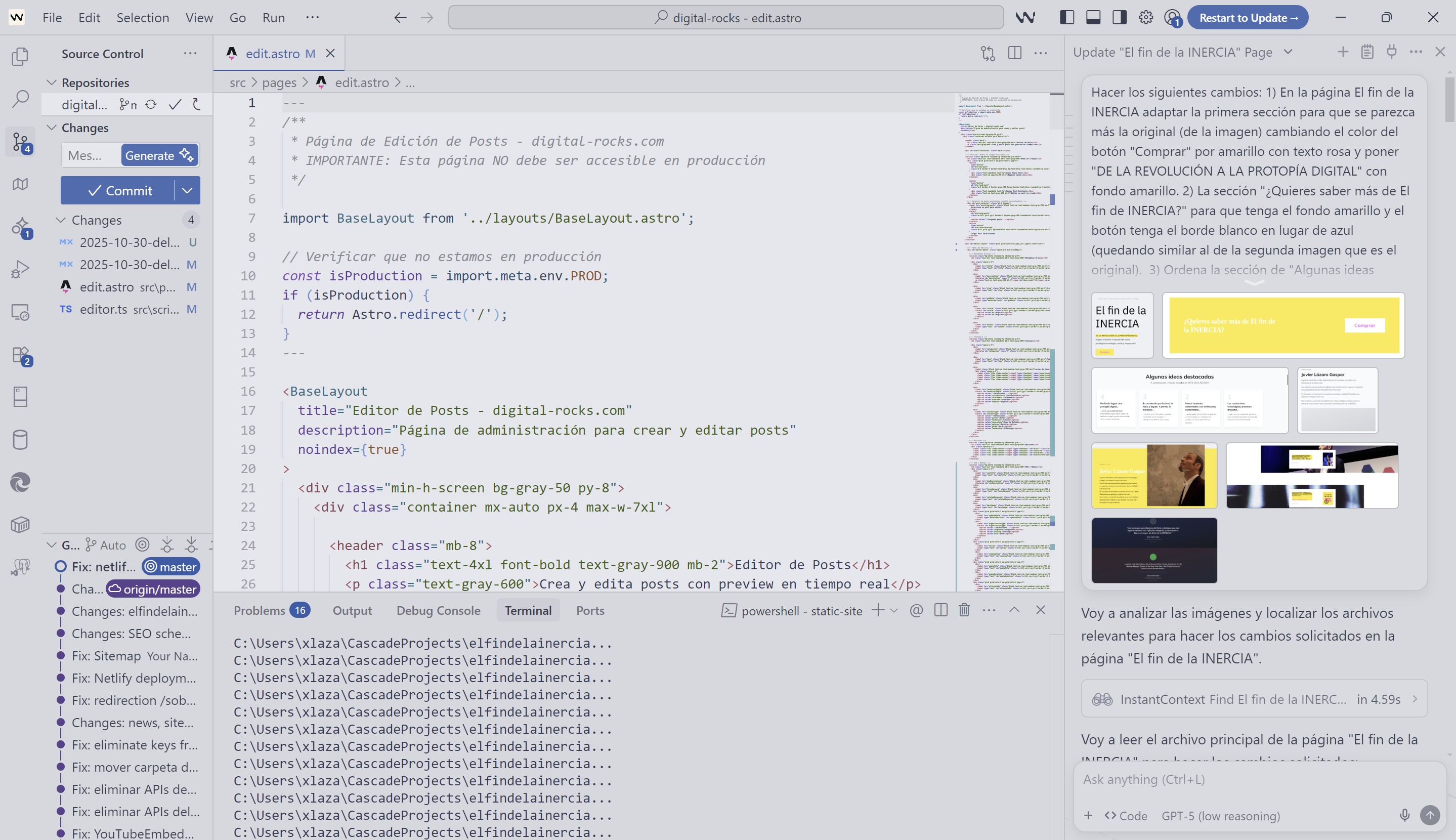
From COBOL to Agentic AI: Transforming the Software Lifecycle
Evolution of the software lifecycle applying AI and Agentic AI

Digital Transformation: Beyond Technology
In Digital Transformation, purpose and culture are more important than technology itself.

BIG TECH CAPITALISM by Evgeny Morozov
'Big Tech Capitalism' shares many of the issues I describe in 'The End of Inertia' but does not approach them in the same way, as its author starts from an e...
All opinions expressed on this blog are personal and do not represent those of any company or organization with which I collaborate.

